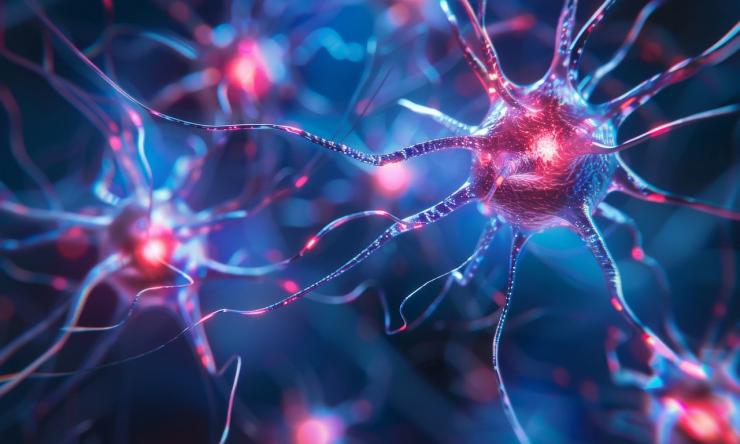Researchers at BCM and TCH create mouse model to mimic Parkinson’s disease
Researchers at the Jan and Dan Duncan Neurological Research Institute (NRI) at Texas Children’s Hospital and Baylor College of Medicine recently made an important advance in neurodegenerative disease research and modeling. They created a mouse model that recapitulates the early non-motor symptoms as well as the motor difficulties in Parkinson’s disease in a manner that directly mimics the condition in many patients.
This research, published in the Proceedings of the National Academy of Sciences, was led by Dr. Huda Zoghbi, Distinguished Service Professor at Baylor, director of the Texas Children’s NRI and a Howard Hughes Medical Institute investigator. Zoghbi’s research is distinguished by using accurate models of human neurological disorders to advance our understandings of diseases.
Parkinson’s disease is a devastating neurological condition that annually affects around 6 million people worldwide, including about 1 million Americans. That number is expected to increase in the U.S. by 20% by 2030, according to the Parkinson’s Foundation. There is no cure available for Parkinson’s disease, which means it is even more important to research and develop treatment strategies.
The most well-known symptoms of Parkinson’s disease are associated with motor dysfunction like tremor and balance problems that present in later life, but Parkinson’s disease patients may experience gastrointestinal issues such as constipation and/or loss of smell some 20 years before being diagnosed with the condition.
The exact cause of Parkinson’s disease is still largely a mystery. Scientists believe a combination of genetic and environmental factors is most likely to either cause or exacerbate the condition. Genetic predisposition, such as mutations in certain genes like SNCA (α -Synuclein) and other factors like age, exposure to pesticides or other chemicals, all may play a role in whether someone develops Parkinson’s disease.
Animal models are essential for studying human diseases; however, one of the major challenges to using model systems is that they often do not exactly mirror the human disorder. Model limitations are especially important when it comes to studying late onset neurodegenerative diseases given the slow progression over decades.
“The challenge in using mice to model Parkinson’s disease lies in the fact that even though mice can be aged, their neurons, even when they’re 2 years old, are not exactly as challenged as human neurons that have been around for decades,” Zoghbi said, “So sometimes mice modified to carry the same human mutation do not present the same characteristics seen in humans, probably because the disease takes a long time to manifest.”
More than 25 years ago, scientists established that mutations in the SNCA gene lead to accumulation of α-Synuclein protein, causing loss of dopamine-making neurons in the mid-brain – a hallmark of Parkinson’s disease. Therefore, several mouse models that overproduce the mutant forms of α-Synuclein have been generated. While these models recapitulate neurodegeneration and some features of motor dysfunction, , the mice did not display all the features seen in humans with Parkinson’s disease.
For their model, Zoghbi and Dr. Youngdoo Kim, a postdoctoral associate in the Department of Molecular and Human Genetics, utilized CRISPR-Cas9 technology to introduce a known Parkinson’s disease-causing SNCA mutation called G51D into the SNCA gene in mice. Kim explains that simply introducing the mutation into the native gene allows for “the gene to be expressed in the right time, at the right place and at the right dosage” because the gene is produced as normal, just as it would be in a human carrying the mutation.
When Kim characterized the mice, he found this G51D mouse model fully recapitulates the progression of Parkinson’s disease in a manner that is similar to how it develops in humans. The mice begin to show the early signs of Parkinson’s disease in their olfactory systems and guts (a result of α-Synuclein accumulation) as early as 3 months of age. Motor difficulties and loss of dopamine-producing neurons do not appear until about 8-10 months of age when the G51D mice show gait and balance issues and suffer from the same neurodegeneration as humans. That non-motor symptoms appear so much earlier than the typical motor difficulties, highlights the importance of screening aging adults for loss of smell and constipation to aid in early detection of the disease.
“The G51D mouse model represents the most accurate model of Parkinson’s disease available today. The mirroring of human early onset symptoms not displayed by other models means that these mice can be used to monitor the biological changes during Parkinson’s disease progression to better understand the sequence of molecular events leading to the dysfunction in the brain,” Kim said. “This new model will be a valuable tool to help identify new Parkinson’s disease biomarkers and to test a range of therapeutics and non-pharmacological interventions that could alter the course of Parkinson’s disease progression, and one-day, maybe even prevent the disease. The Zoghbi Lab will make this model available to any researcher interested in it.
Other contributors to this work include Joseph McInnes, Jiyoen Kim, Yan Hong Wei Liang, Surabi Veeraragavan, Alexandra Rae Garza, Benjamin David Webst Belfort, Benjamin Arenkiel, and Rodney Samaco. The authors are affiliated with Baylor College of Medicine and the Jan and Dan Duncan Neurological Research Institute at Texas Children’s Hospital.
This work was supported by grants from the Huffington Foundation, JPB Foundation, and HHMI.










